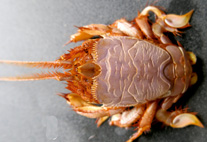Abstract
Skinks of the genus Eutropis represent one of the most widespread and speciose lizard groups in tropical Asia. Numerous recent studies have utilized a variety of genes and methods to reconstruct the phylogeny of these lizards, however these studies have not resolved the placement of one of the widely distributed Eutropis Fitzinger, E. dissimilis. We have sequenced a specimen of E. dissimilis from the type locality and our result suggests that it is part of the Indian radiation of Eutropis and not related to African Trachylepis Fitzinger or Southeast Asian Dasia Gray as previously suggested. Furthermore, we report that the sequence of E. dissimilis used in an earlier study of the once cosmopolitan genus ‘Mabuya’ may have been erroneously identified and appears to be a sequence of E. novemcarinata. We also demonstrate that the evolution of a clear lower eyelid, which was considered a synapomorphy for the sister genus Trachylepis, has arisen multiple times in Eutropis.

